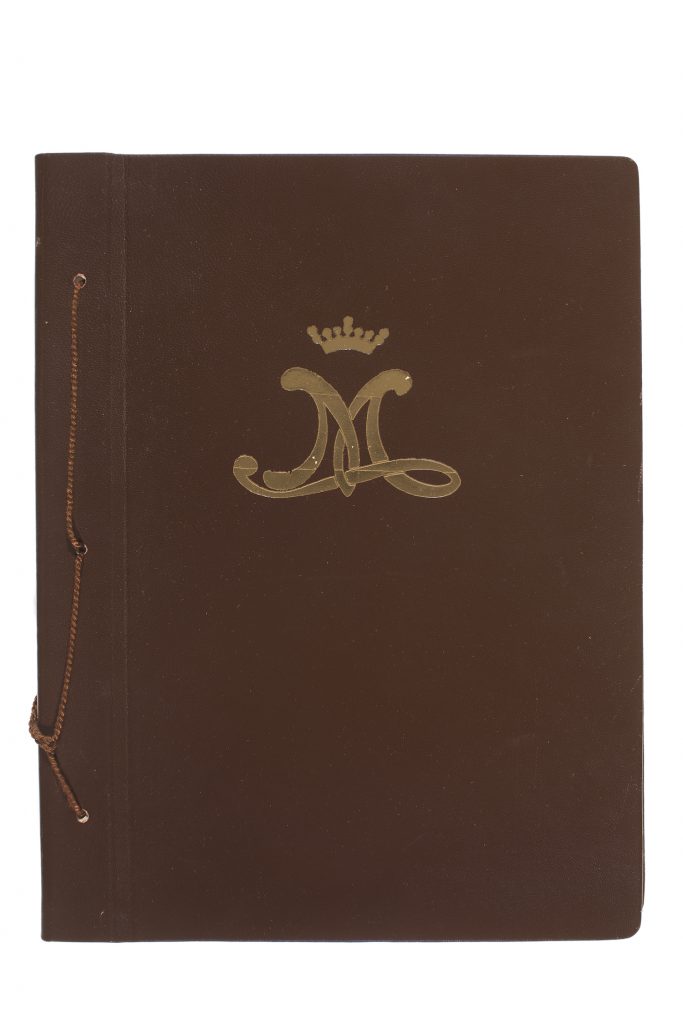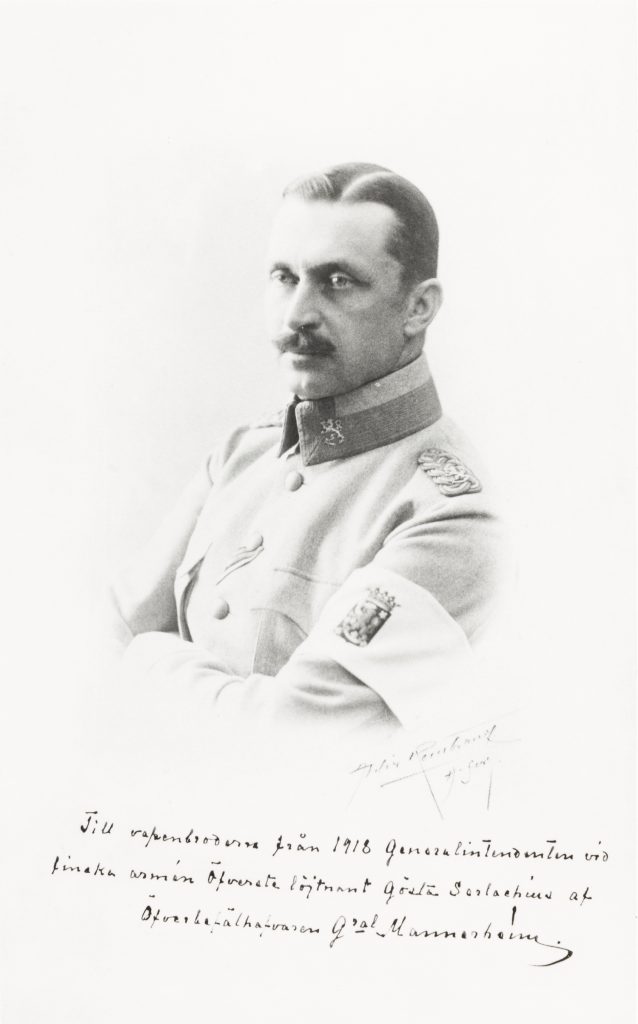White Army commemorative album
MAY 2018
The archives of Gösta Serlachius Fine Arts Foundation have a White Army commemorative album from 1918 containing photographs of army officers. On the first page of the album is Carl Gustaf Emil Mannerheim and the inscription: “To brother-in-arms of 1918, Quartermaster-General of the Finnish Army, Lieutenant-Colonel Gösta Serlachius, from Commander-in-Chief General Mannerheim.”
Serlachius and Mannerheim corresponded about the album under preparation in autumn 1919. Apparently, there were propositions that it should also contain military scenes, but both Serlachius and Mannerheim decided on portraits taken by professional photographers. The album contains 38 of these portraits.
“As we should prepare the album, and complete it some time soon, I would be grateful if you would let me know when you will send the photographs. There’s no need to fix them on to board, because they will in any case be pasted into the album,” wrote Serlachius to Mannerheim on 27 October 1919.”
Mannerheim replied that although he did not take any photographs himself during the war, he certainly possessed a lot of photographs. “I am sending now my own photograph – if it can be used – because naturally I am not opposed to appearing among other famous people in this upcoming important album.”
Gösta Serlachius ended up in the General Staff of the White Army headquarters and at the head of its Quartermaster General’s Department by chance. He was returning to his home in Mänttä from a trip at the beginning of February 1918. In Vilppula, fighting had taken place over the control of the Haapamäki railway intersection and at the same time the entire section of track between Ostrobothnia and Karelia. White forces had been sent to Vilppula from elsewhere in Finland, but there were no plans to provide for them.
As someone who knew the locality, Serlachius assumed responsibility for the matter in hand and sent from amidst the military action a message to Mannerheim saying that he was at the army’s disposal. In a couple of days, he managed to arrange food supplies for the Whites fighting in Vilppula and left on a train towards Vaasa. Only on the way did he receive Mannerheim’s telegram, calling him to serve in the army.
This was the beginning of Gösta Serlachius’ career as “Quartermaster-General of the Finnish Army”, whose task was the acquisition, storage and distribution to the army of clothing, food and animals. The Quartermaster-General’s Department succeeded in hiring travelling advisers and in setting up nearly 20 regional offices in different parts of Finland during the war. One of these was in Vilppula.
Serlachius also quickly harnessed the industrial plants under his own authority to serve the war effort. The machinery shop of the Mänttä mill repaired the army’s equipment, and the Mänttä mill’s paper machine produced cellulose wadding for the war hospitals. Serlachius companies produced the White Army’s printed materials and the Government’s banknote paper.
“With boundless energy, Mr Serlachius set to work and, despite overwhelming difficulties, created the present Quartermaster-General’s Department, which made use of all of the country’s resources and substantially contributed to the successful outcome of the Freedom War,” wrote Mannerheim, awarding Serlachius, who had avoided military service in his youth, the Cross of Liberty, 2nd Class and the military rank of Lieutenant-Colonel (Reserve).
The Quartermaster-General Department, which lasted for four months, the victory of the Whites and a Victory Parade in Helsinki on 16 May 1918 constituted a successful war from the perspective of the winning side and Gösta Serlachius. Bands accompanied the parade of 12,000 marching men, with Commander-in-Chief Mannerheim and his staff riding at the front. Lieutenant-Colonel Gösta Serlachius led the vehicle column of the parade and posed for photographs with other White Army officers.
Helena Hänninen
Curator



